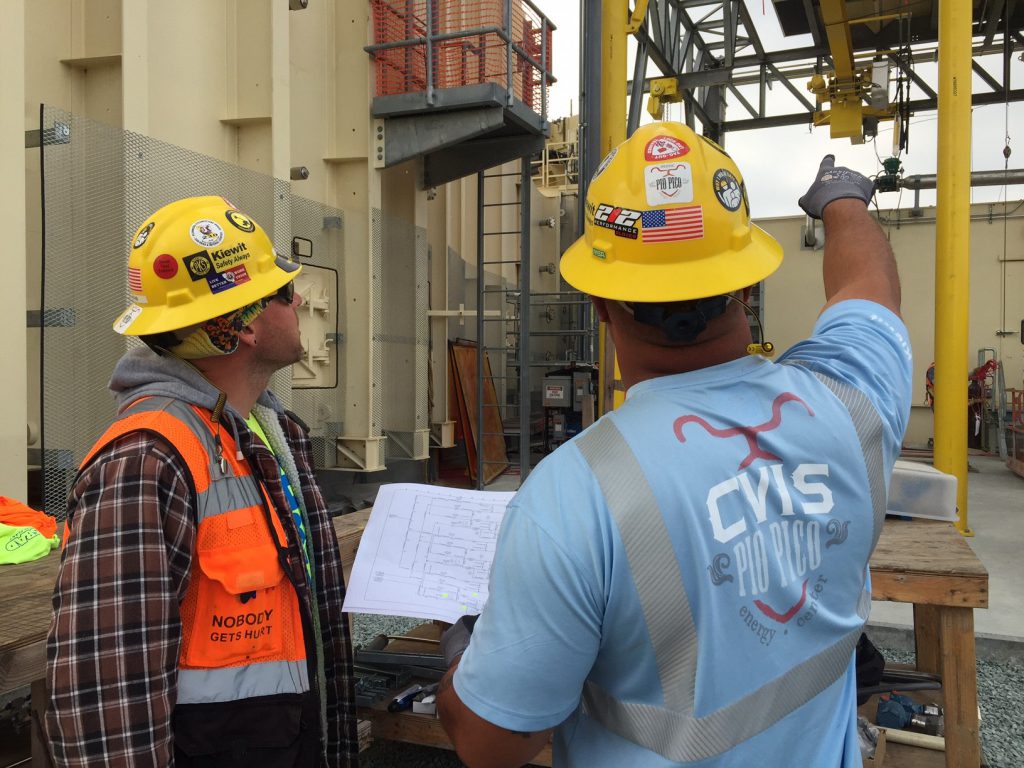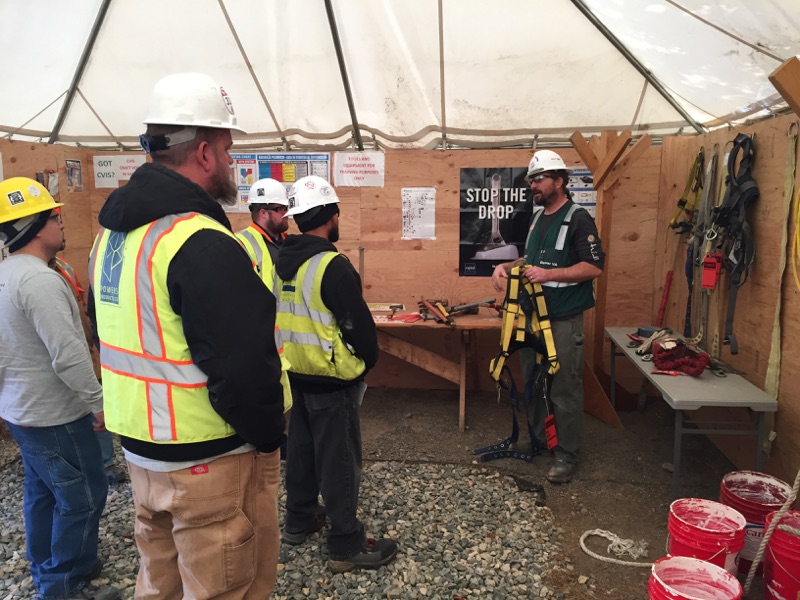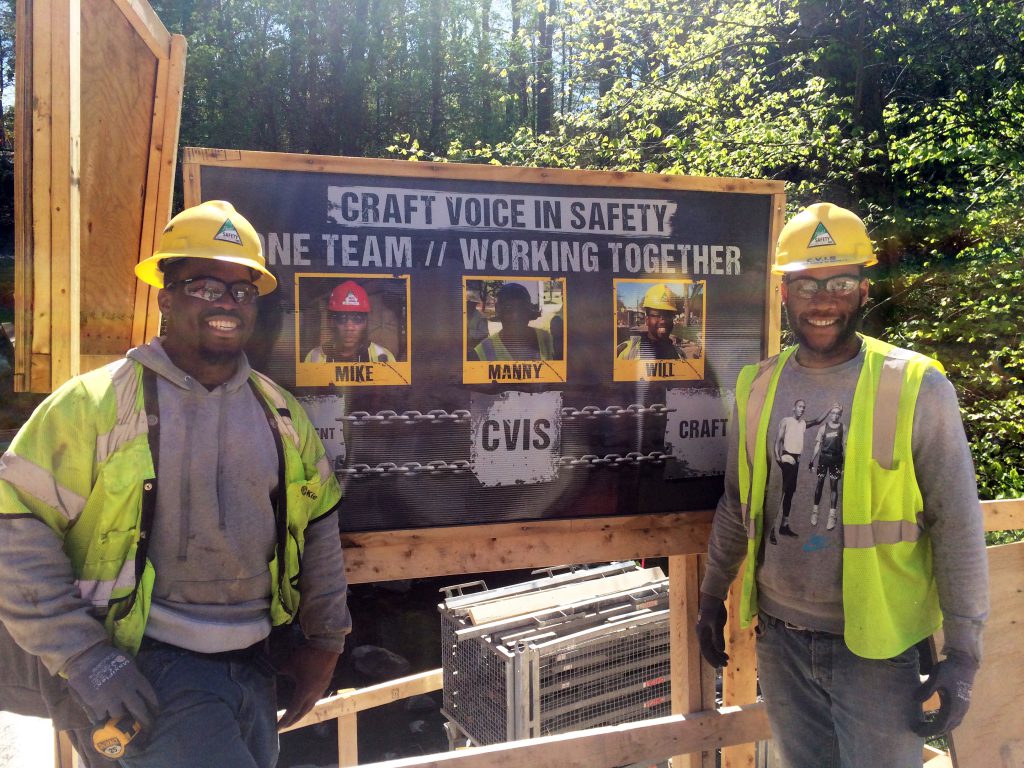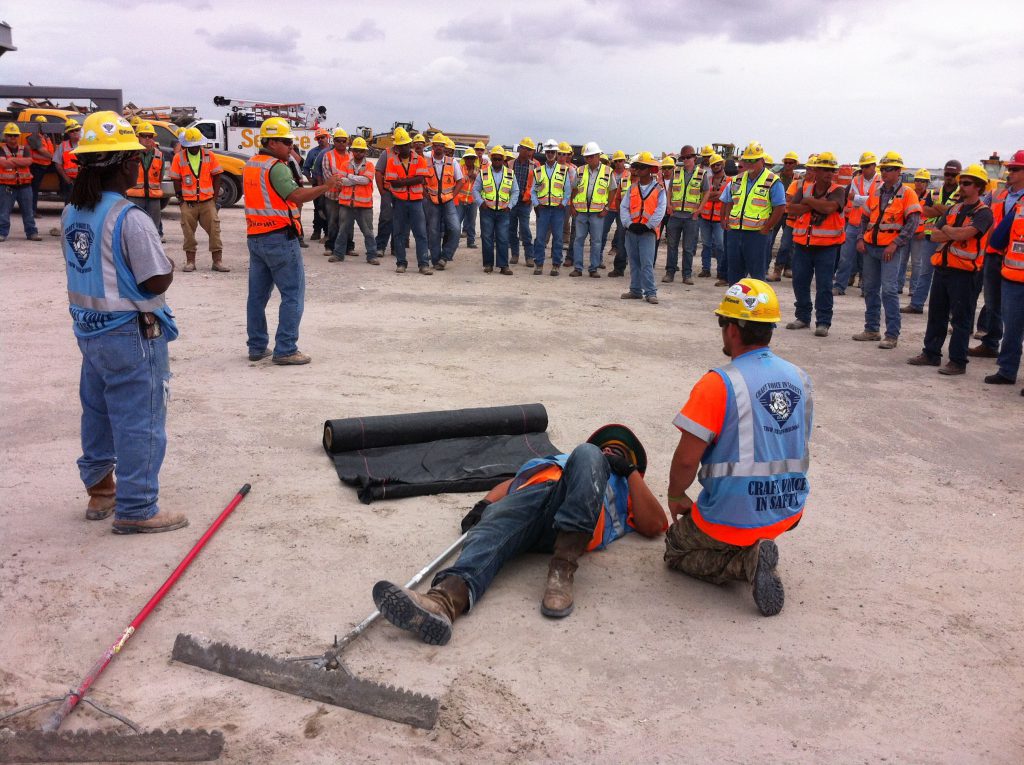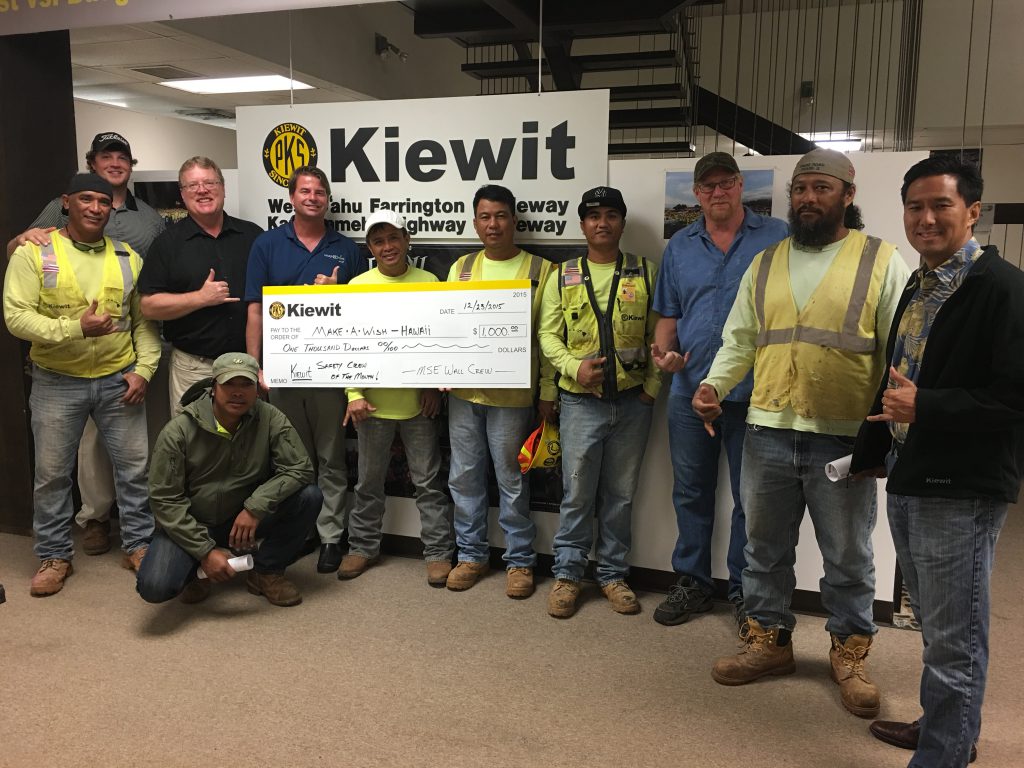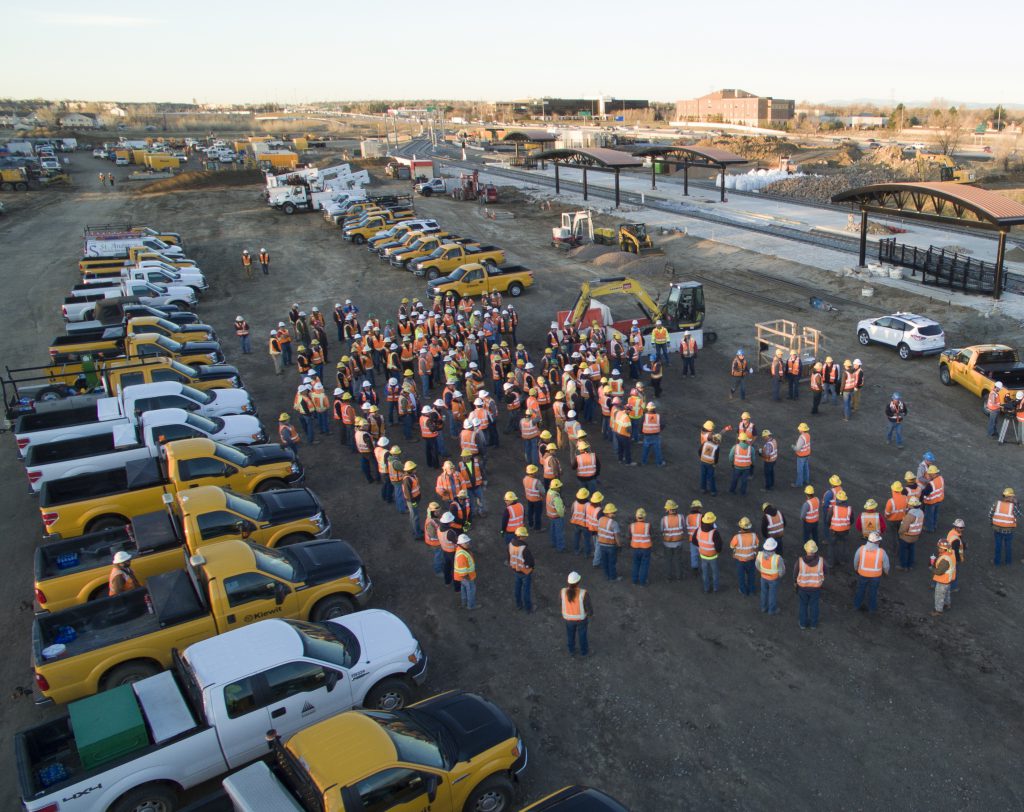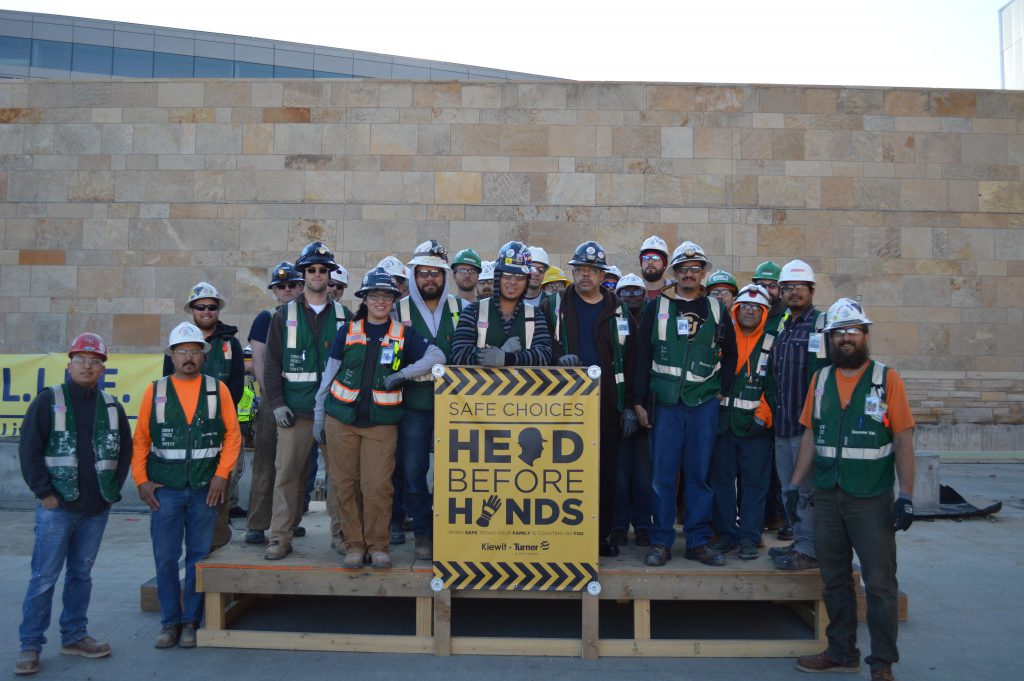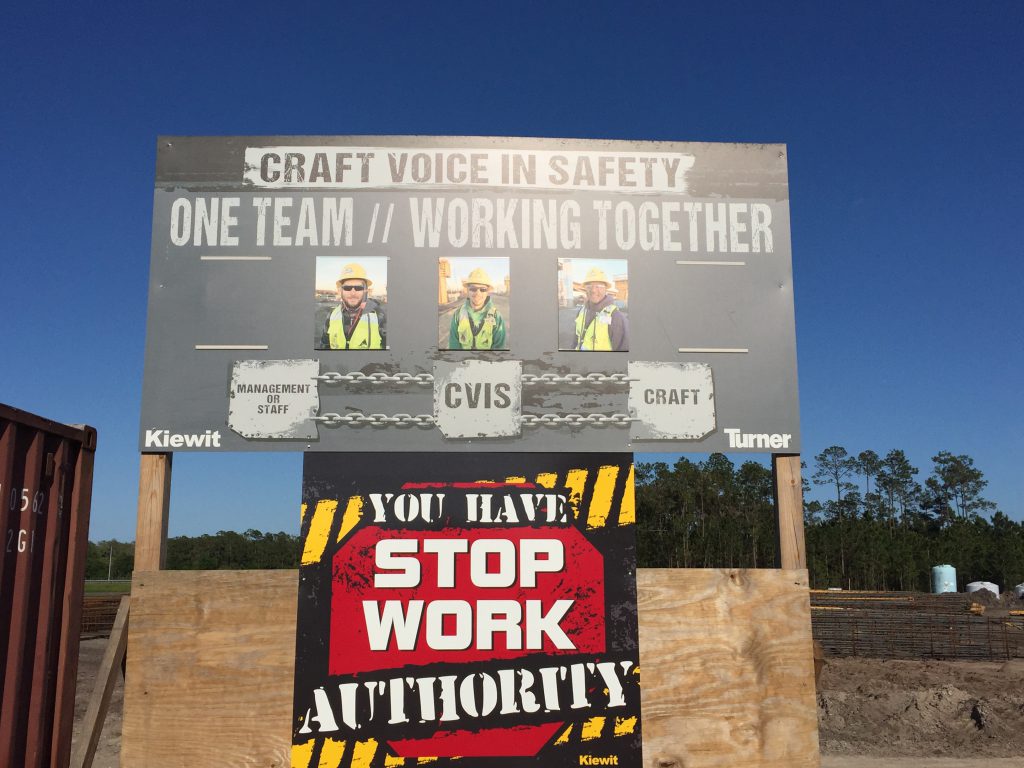At any moment, Kiewit projects are underway in drastically different environments, from urban areas in New York City and Los Angeles, to some of the northernmost regions of Alberta and Ontario, and even in the desert of Western Australia. The work ranges in size from several thousand dollars to more than $3 billion in contract value, and from a few weeks to a few years in duration depending on the scope.
Despite these variables, every Kiewit job shares one thing in common as its most important focus: the safety of all those involved on the project. Since its beginnings in 2012, the company’s Craft Voice in Safety (CVIS) program has put more of that responsibility and ownership into the hands of the craft workers themselves.
What is CVIS?
CVIS is a craft-only safety committee that interacts on a daily and weekly basis with management and their own peers to address safety on the project. Its ultimate purpose is to provide a platform to ensure all craft have an equal voice in safety, while developing relationships and empowering everyone to support safety through prevention, education and awareness.
For Kiewit Safety Director Eric Grundke, implementing CVIS was a no-brainer.
“Who better to address our safety concerns than our craft?” Grundke said. “These men and women know the hazards of the job best. Their knowledge and experience is an incredible resource when identifying and mitigating safety issues in the field.”
Building a CVIS team
Every Kiewit job is required to have a CVIS team. At start-up, the preference is to begin building the committee with an experienced CVIS member. If that’s not an option, project management selects craft workers to start the program.
Craft elect additional committee members from a list of volunteers. Teams vary in size based on the needs of the project, but ideally include a member from each trade and shift, as well as from all major subcontractors on the project. Reviews of committee members are conducted throughout the year to evaluate and ensure their effectiveness.
“People have to want to be part of the committee and be recognized by others as good representatives of the group,” said Infrastructure Safety Director Rand Magee. “Involving all disciplines and shifts gives us better insight into all of the work on the project, while building a sense of unity around our safety efforts.”
CVIS Liaison Dave Mefford reviews fall protection with new hires in the CVIS Education Center at the Replacement Medical Center Facility in Colorado.
CVIS members Willie Stringfield and Mike Davis on the Carroll Avenue Bridge Rehabilitation project in Takoma Park, Md.
A CVIS team on the Tampa Bay Water Reservoir project provides emergency response training to prepare coworkers for a potential medical emergency on the job.
Involvement from all levels
CVIS committees meet at least once a week. In addition to the committee members, a senior management representative on the job is required to attend all meetings. Attendees discuss observations in the field, determine how to address concerns and implement best practices, as well as follow up on the status of resulting action items.
Projects typically have CVIS committees join all job site tours with Kiewit management, from on-site managers up to the CEO. This ensures members can interact with every level of management, and keeps safety top-of-mind for not only the project but the entire organization.
“Engagement with management is crucial to the success of CVIS,” said Magee. “Continuous interaction between craft and staff is about having no secrets regarding safety on our projects — good or bad. In order to reach our goal of Nobody Gets Hurt, everyone needs ownership.”
Magee’s thought is one that’s echoed by CVIS members.
“One of our CVIS team’s favorite activities has been building the relationship between craft and management,” said Dion Jones, CVIS member on the Cove Point LNG project in Maryland.
Ultimately, one of the best ways to gauge how a CVIS committee’s efforts are being received is through regular discussions with non-CVIS craft.
“When other craft understand the mission of the CVIS team and have a sense of what they’re accomplishing on the job, then I know there’s a strong safety commitment and support for the CVIS team,” said Grundke.
A CVIS-led mass safety meeting is seen from above on the 1-225 Light Rail Corridor project in Colorado.
The CVIS team on the Replacement Medical Center Facility, Eastern Colorado Health Care System in Colorado, reminds workers to think things through before they act with their hands.
Best practices
As CVIS has evolved, several best practices have become popular across the company. One is a “You Asked, We Did” board, which is placed in a highly visible location to update peers on what CVIS and management have been asked to address and how they’ve followed up.
“The ‘You Asked, We Did’ boards help build trust because it shows action; it shows we will find a way to address concerns and make this a safer work environment,” said Travis Priddy, safety director for Kiewit’s infrastructure projects on the West Coast. “The key to keeping CVIS effective is constant communication back to our builders on what CVIS is working on and what they are accomplishing for their fellow builders.”
Safety rodeos are another common sight on projects. These training events are tailored to each job’s schedule. For example, if there’s an increased risk of dropped objects with upcoming work, a safety rodeo will demonstrate potential hazards through a live demonstration or “skit” using props.
“The safety rodeos demonstrate hazards and hazard controls that are experienced on the project daily. I’ve overheard people say it opens their eyes to the seriousness of dropped objects — that even small nails falling can really hurt someone,” said Chris Rutkowski, site safety lead for Kiewit-Kvaerner Contractors on the Hebron Gravity-Based Structure (GBS) project in Canada.
“What’s most important is that these rodeos are run by the craft. A safety message from peers carries more credibility than if it just comes from management,” he added.
Proactive training is one of the most common themes of CVIS, and extends beyond safety rodeos. Like on the Replacement Medical Center Facility, Eastern Colorado Health Care System project where a CVIS Education Center provides hands-on onboarding for new hires, reviewing tools and equipment used on the job and the potential consequences if used improperly.
“Having the opportunity to educate fellow craft in our CVIS Education Center on the hazards around us and watching craft take ownership and embrace the CVIS culture has been a positive experience,” said CVIS Lead Dave Mefford.
Additional best practices like suggestion boxes allow individuals to get involved in the process, while milestone events and barbecues recognize noteworthy accomplishments of the entire team.
Making safety personal
The effects of the best practices coupled with CVIS tools and techniques unique to each project, are seen most clearly when changes directly improve the safety of those on site.
Like on the Cove Point LNG project, where CVIS has helped improve driving and access conditions.
“Some of the greatest things CVIS has been able to bring to the Cove Point job site are a lower speed limit and improved walkways to allow the best driving and access conditions possible in such a tight space,” said Jones.
Collectively, the process and the results are all about that one goal: ensuring the safety of everyone on Kiewit’s projects.
“All of our safety programs are about making safety personal,” said Grundke. “Our CVIS teams allow us to build better relationships and ultimately get everyone involved so Nobody Gets Hurt.”
